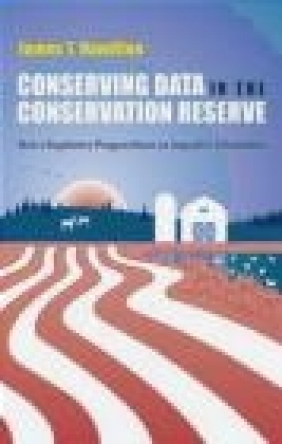Conserving Data in the Conservation Reserve
James Hamilton, James T Hamilton
Conserving Data in the Conservation Reserve
James Hamilton, James T Hamilton
- Producent: Taylor & Francis
- Rok produkcji: 2010
- ISBN: 9781933115818
- Ilość stron: 168
- Oprawa: Miękka
Niedostępna
Opis: Conserving Data in the Conservation Reserve - James Hamilton, James T Hamilton
Enrolling over 30 million acres, the U.S. Conservation Reserve Program (CRP) is the largest conservation program in the United States. Under the guidelines of the CRP, the federal government pays farmers to stop farming their land in the hopes of achieving a variety of conservation goals, including the reduction of soil erosion, improvement of water quality, and creation of wildlife habitat. In "Conserving Data", James T. Hamilton explores the role of information in the policy cycle as it relates to the CRP. The author asks how the creation and distribution of information about what is going on across these millions of enrolled acres has influenced the development of the program itself. Of the many CRP stakeholders, each accesses a different set of information about the CRP's operations. Regulators have developed the Environmental Benefits Index as a rough indicator of a field's conservation benefits and adopted that measure as a way to determine which lands should be granted conservation contracts. NGOs have used publicly available data from these contracts to show how CRP monies are allocated. Members of Congress have used oversight hearings and GAO reports to monitor the Farm Service Agency's conservation policy decisions. Reporters have localized the impact of the CRP by writing stories about increases in wildlife and hunting on CRP fields in their areas. "Conserving Data" brings together and analyzes these various streams of information, drawing upon original interviews with regulators, new data from Freedom of Information Act requests, and regulatory filings. Using the CRP as a launch point, Hamilton explores the role of information, including 'hidden information,' in the design and implementation of regulatory policy. 'A beautifully written study of an important program that has not received sufficient academic attention. The Conservation Reserve Program has become an enormously important force for preventing non-point source pollution, providing wildlife habitat, and even reducing emissions of greenhouse gases...Conserving Data does a superb job of explaining the political and economic forces that have shaped the evolutionary path of the CRP.' Robert V. Percival, Director, Environmental Law Program, University of Maryland School of Law 'Those working at the interface between science and policy will find it of interest, not least because with a light touch the story is informed by a small amount of political theory explained in the introduction.' John Hopkins, Bulletin of the British Ecological SocietyAcknowledgments Introduction 1. Information through the Policy Cycle 2. Defining the Environmental Benefits Index 3. Interpreting the Conservation Reserve Program in the Field(s) 4. The Mechanics of Monitoring: GAO, Congress, and the Federal Register 5. The Environmental Working Group Pulls the Pieces Together 6. Media Coverage and Academic Analyses: Cycles of Praise and Criticism 7. Information and Regulatory Implementation References Index
Szczegóły: Conserving Data in the Conservation Reserve - James Hamilton, James T Hamilton
Tytuł: Conserving Data in the Conservation Reserve
Autor: James Hamilton, James T Hamilton
Producent: Taylor & Francis
ISBN: 9781933115818
Rok produkcji: 2010
Ilość stron: 168
Oprawa: Miękka
Waga: 0.16 kg






























